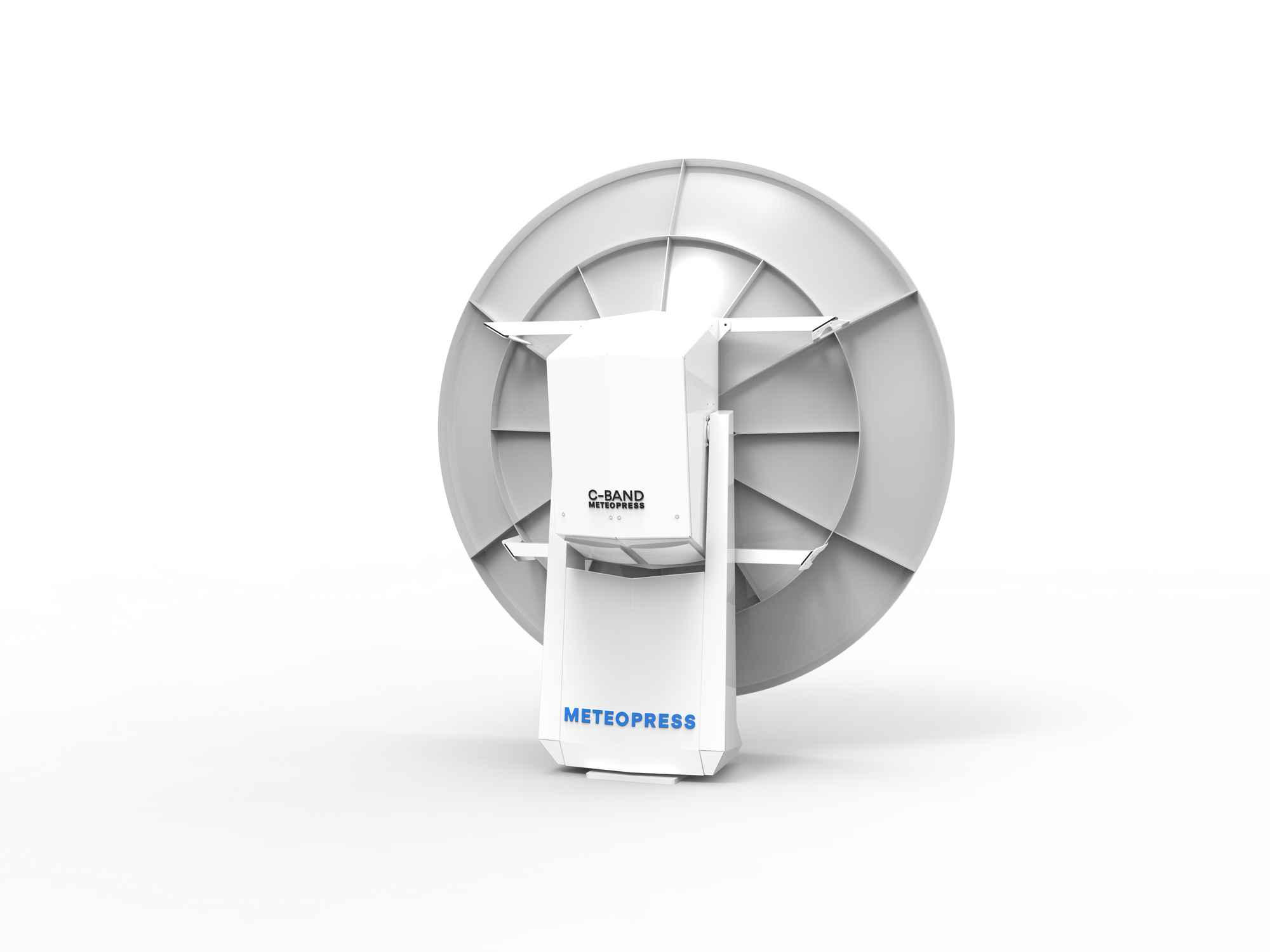Solid State vs Magnetron Weather Radars 10 key advantages
Short summary of key advantages of Solid-State vs. magnetron radars

1) Higher Data Quality
- higher phase stability than magnetron (Comparable phase stability to Klystron radars)
- independent H&V transmitters = ability to measure LDR
- lower peak power = less interference issues
- ability to oversample their beams to give better output resolution
2) Lowest Operational Costs
- zero consumables (SSPA a permanent component, magnetron replaced every 3-5 years)
- ecological radar - lowest power consumption, possible to power with solar & wind power
- less breakage and higher SLA - with automatic HW monitoring using accelerometers, microphones and cameras we can spot mechanical failures before they happen
Power consumption by radar type
Conventional Klystron C-band Radar:
- Maximum power consumption of 8850 W, Typical 8000W
Conventional Magnetron C-band Radar:
Maximum power consumption of 3500 W, Typical 2200W
Conventional Solid-State C-band Radar
Maximum power consumption of 4000 W Typical: 2000 W.
Meteopress Solid-State C-band Radar
Maximum power consumption of 2200 W, Typical: 1500 W.
Meteopress ECO Solid-State C-band Radar
Maximum power consumption of 700 W, Typical: 500 W.
3) Lowest Deployment Costs
3a) incorporated design - no dedicated radar rooms necessary;
3b) light structures can hold the radar (1500kg weight of 1° beam radar);
3c) only basic electricity infrastructure necessary - low power consumption (1 phase, 110/230V sufficient)
4) Lowest Acquisition Costs
4a) save up to 50% compared to conventional magnetron radars;
4b) C-band for a price of an X-band (contact our sales guys for your own quote)
4c) Radar As A Service and radar rental options available
5) 21st century radar - agile light & modular modern technology
5a) SW based radar with AI incorporated SPUs
5b) fully remote operation & diagnostics
5c) free remote upgrades
6) Full Compatibility
6a) compatible with current radars and softwares
6b) outputs WMO and all common radar outputs so it is usable with your current SW and with your current radar set up
6c) cleaner signal = less interference to other radars

7) Open agile SW
7a) agile modern SW running on a standard computer (no FPGA experience needed), written in Python and C.
8) Operational & Research radar
8a) Multiple signal processings can run in parallel on one radar
8b) Possibility to combine operational use with research
8c) Easily accessible IQ recordings and IQ live streams
8d) Arbitrary pulses can be transmitted sweep-by-sweep
9) Redeploy-able
9a) Super-short (2-day) deployment time allows temporary radar usage
9b) Simple change of operating frequency over a wide band
9c) Low power consumption allows for off-grid solutions
9d) Mobile C-band version available
10) Improved health and safety
10a) Lower peak power means better health & safety compliance
10b) No hazardous high voltage
10c) No X-ray emissions (compared to Klystron radars)